-
i
away
Information Machiya
Hachiku-an (Former Kawasaki Residence)
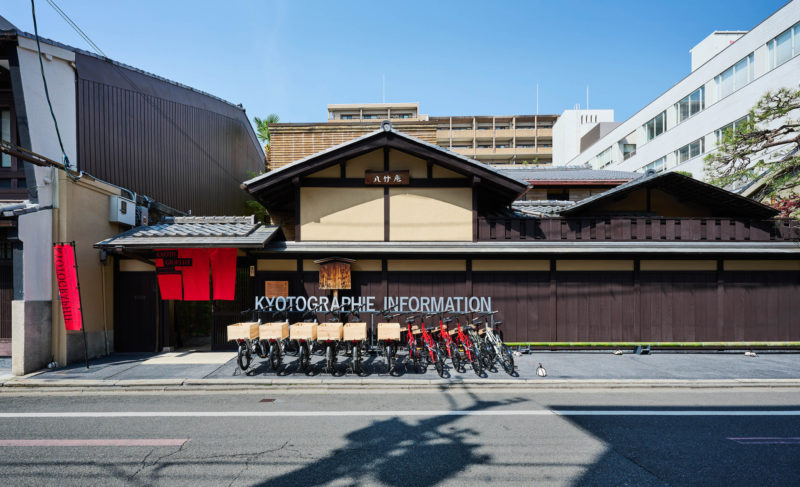
i
Information Machiya
Hachiku-an (Former Kawasaki Residence)
Beyond the Main Program exhibitions, visit the Information Machiya to discover everything you need to know about KYOTOGRAPHIE. Purchase tickets, merchandise, artist books, and special publications. Our concierge desk offers exhibition details, local sightseeing recommendations, and free bicycle rental to explore the festival.
In the Japanese tea room a special installation by Inma Barrero is on display.
-
1
away
Adam Rouhana
The Logic of Truth
Hachiku-an (Former Kawasaki Residence)
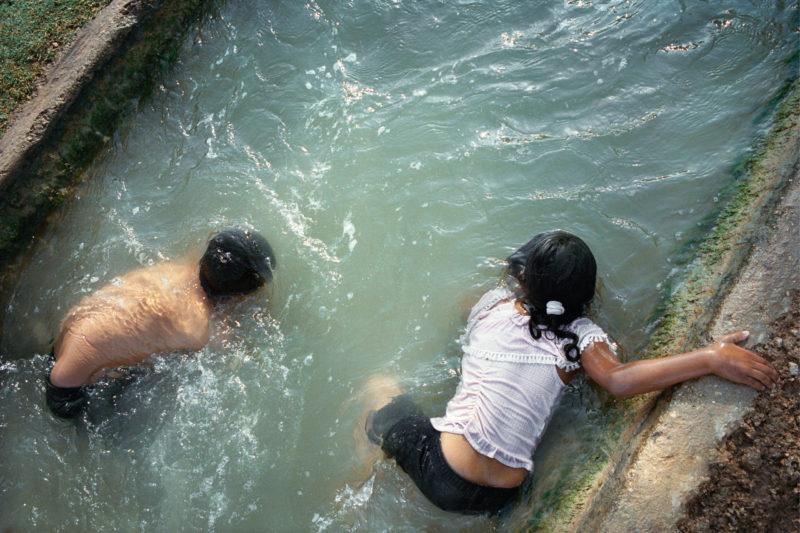
1
Adam Rouhana
The Logic of Truth
Hachiku-an (Former Kawasaki Residence)
The Logic of Truth exhibition challenges the foundations of our known reality, exploring how narratives are shaped by discursive power. The exhibition centers on two key questions: the Palestinian people's right to sovereignty in their homeland and photography's role in capturing objective reality. It delves into the manipulation of history and the distortion of truth, highlighting through the case of Palestine how subaltern histories are often rewritten or erased by imperial and colonial powers.
Through the lens of Palestinian-American photographer Adam Rouhana, the exhibition offers an alternative perspective on Palestine, moving beyond the images portrayed by mainstream media. Rouhana’s work captures intimate, everyday moments often overlooked—elderly people sipping coffee, children playing, and families gathering. These images reveal resilience in the face of a brutal and violent occupation, where ordinary moments become acts of defiance and survival. While focusing on Palestinian life, the exhibition also highlights the harsh realities of the occupation, which affects every facet of people’s lives, from their access to healthcare to their education and economic opportunities. Rouhana’s work celebrates both the beauty of everyday life and the underlying resistance to settler-colonial forces. Iconic symbols, such as the watermelon, represent defiance, mirroring the Palestinian flag’s colors.
The Logic of Truth is a counter-narrative, a counter-archive preserving suppressed Palestinian histories. Rouhana’s photographs offer viewers the opportunity to reconsider preconceived notions of Palestine and be introduced to a certain truth.
Text by Taous Dahmani
© Adam Rouhana
-
2
away
Hiromi Tsuchida and others
Little Boy
Hachiku-an (Former Kawasaki Residence)

2
Hiromi Tsuchida and others
Little Boy
Hachiku-an (Former Kawasaki Residence)
What happened above and below the atomic cloud concerns all of humanity. Eighty years after that day, when nature’s laws were violated, we reflect—what does it mean to us now?

-
3
away
Keijiro Kai
Down to the Bone
Kurochiku Makura Building
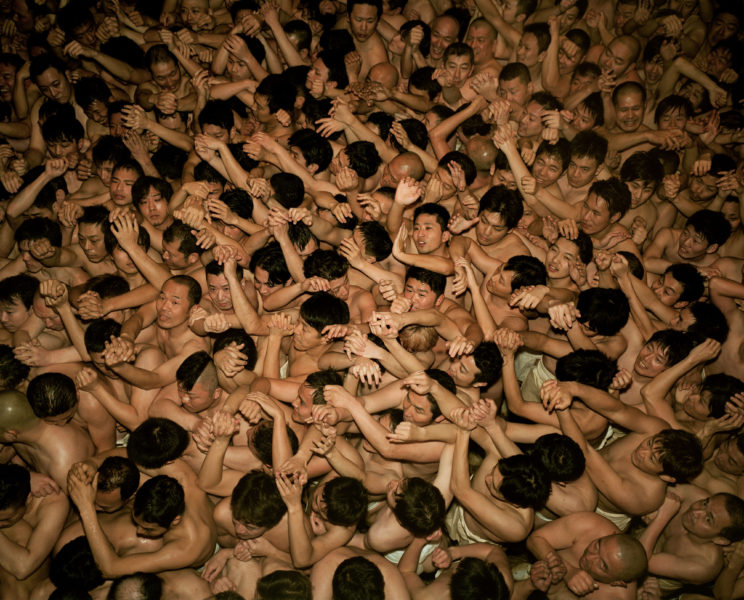
3
Keijiro Kai
Down to the Bone
Supported by Fujifilm
Kurochiku Makura Building
In 2012, sports photographer Keijiro Kai attended a Christian festival called Shrovetide Football which has been held annually for several hundred years in Ashbourne, a town in northern England. This festival is thought to be the prototype of modern football (soccer) and rugby. During the festival, the entire town becomes a playing field as players fight for the ball, sometimes getting into brawls, trying to throw it into the goal. Kai, who believes that “festivals reveal something fundamental about human nature,” has since travelled to Georgia, South America, Japan and other places to photograph various traditional fighting festivals that have been passed down from generation to generation.
This exhibition includes Shrove Tuesday, a series documenting Shrovetide Football; Opens and Stands Up, photographed during the Lelo festival held during Easter in Georgia; Kira no haregi (‘Clothed in sunny finery’), photographed at hadaka (‘naked’) festivals in the Japanese prefectures of Iwate, Mie, Okayama, and Gunma; Teoi no kuma (‘Wounded bears’) shot during the Dosojin Festival at Nozawa Onsen in Nagano; and Ichijō no tetsu (‘Ashes to ashes’), about the Toda Fire Festival in Aichi. On the first floor, a nine-minute video featuring four Kai series—Down to the Bone, Teoi no kuma, Kira no haregi, and Ichijō no tetsu—is being shown for the first time on three large screens.
Kai sometimes dons a fundoshi loincloth) and participates in the festivals himself, shooting photos while being pushed around. He says that it’s only when he has to change film that he is "pulled back into reality,” briefly changing from participant to spectator. It may be because he moves back and forth between these two states that he is able to capture the trance-like state of excitement of the packed people in such a raw form.
Kai says, "People have a tendency to cling to things they can’t see. Even if we aren’t aware of what we're running towards or fighting for, maybe we need these festivals—occasions to go all out for something—once a year. I hope these photographs give you a tingling sensation, a feeling you can't put into words."
Festivals have attracted and fascinated people throughout history and around the world. Kai's work raises the essential question of what it means to be human.

Clothed in Sunny Finery, Okayama, 2018 © Keijiro Kai
-
4
away
Mao Ishikawa
Red Flower
Kondaya Genbei Chikuin-no-Ma
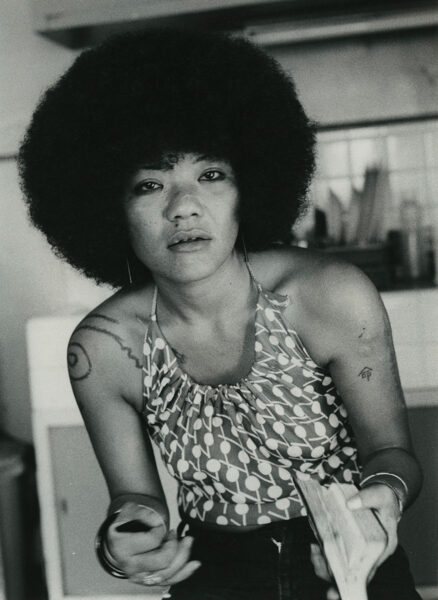
4
Mao Ishikawa
Red Flower
Presented by SIGMA
Kondaya Genbei Chikuin-no-Ma
KYOTOGRAPHIE is honored to host an exhibition by Ishikawa Mao, a photographer representing postwar Okinawa, as part of its 2025 program on the theme of ‘HUMANITY.’
During its long history, dating back to the Ryukyu era, Okinawa has been exploited by the feudal domain of Satsuma, Japan, the United States, and then Japan again. During the Pacific War, Okinawa was used as a ‘sacrificial pawn,’ resulting in tens of thousands of casualties in ground battles, and even after Okinawa’s reversion to Japanese sovereignty in 1972, much of its land and nature were taken over to make way for military bases for the U.S. military and Japan’s Self-Defense Forces.
Ishikawa, who was born in Okinawa under U.S. military rule, has dedicated her life to photographing Okinawa, including U.S. military bases and the islands’ people, from close range, with a gaze of enduring love for Okinawa and humanity.
Ishikawa was inspired to take up photography by demonstrations in 1971 against the Okinawa Reversion Agreement, which called for the continued existence of U.S. military bases and the deployment of the Self-Defense Forces. In 2023, in response to Japan-U.S. joint military exercises and missile base construction, Ishikawa once again trained her camera on issues surrounding the military bases in the Ryukyu Islands, despite battling a seriously illness.
Titled Akabana—Okinawa no Onna (Red Flower—The Women of Okinawa), named after the native Okinawan hibiscus that Ishikawa loves, this exhibition features Okinawan women who are as strong and beautiful as this flower, as well as works from an earlier series on Black American soldiers who, like the people of Okinawa, have been unfairly discriminated against.
Text by Yusuke Nakanishi, Co-founder and Co-Director of KYOTOGRAPHIE
-------
This is a solo exhibition by Mao Ishikawa, a photographer based in Okinawa.
In recent years, Ishikawa has held major solo exhibitions at the Okinawa Prefectural Museum & Art Museum in 2021 and the Tokyo Opera City Art Gallery in 2023. Since then, she has continued to gain significant recognition, receiving the Minister of Education, Culture, Sports, Science and Technology’s Art Encouragement Prize (74th edition, 2023), the 43rd Domon Ken Award, and the Domestic Photographer Award at the 40th Higashikawa Awards. Her work has also been featured at the Busan Biennale 2024 and the Mead Gallery (Warwick Arts Centre, UK), and is scheduled to be showcased at the 36th São Paulo Biennial in 2025. With her numerous accolades and ongoing solo and international exhibitions, Ishikawa is one of the most globally recognised photographers of our time.
Akabana—Okinawa no Onna (Red Flower: The Women of Okinawa)
All kinds of people connected with Okinawa appear in Ishikawa’s work. Whether American soldiers stationed in Okinawa, members of the Self-Defense Forces, or ordinary citizens, she approaches them all with an equal gaze, depicting them from the same distance. She does not seek to condemn the soldiers stationed in Okinawa. Rather, her perspective is unbiased and human-focused, transcending national frameworks. This approach stems from her early experiences photographing the U.S. military in Okinawa. To document American soldiers, she began working at a bar in Koza that catered exclusively to black servicemen. This was in 1975. That experience culminated in her first major photographic work, Hot Days in Camp Hansen (1982), which marked her debut as a photographer. It also laid the foundation for Akabana—Okinawa no Onna (Red Flower: The Women of Okinawa) (2022).
This exhibition also features new works from The Great Ryukyu Photo Scroll, a project Ishikawa started in 2014. Filmed on Yonaguni Island and Ishigaki Island last year, these works are about what is currently happening on the islands. They deserve to be shared with as many people as possible.
Text by Taro Amano (Chief Curator, Tokyo Opera City Art Gallery)
-------
Akabana—Okinawa no Onna (Red Flower: The Women of Okinawa) is Mao Ishikawa’s earliest body of work. The women captured in the photographs lived in the same time and place as she did. This is what Ishikawa once told me.
“I can’t take photos where I’m just an outsider. When I wanted to photograph the bases and the U.S. soldiers, the quickest way was to become one of the women in town myself.”
“Okinawa is a damn small island—throw a stone, and you’ll hit a friend or a relative. But these women lived with a kind of bold, unshackled freedom that is incredible. I decided to live that way too, without worrying about how people saw me.”
To stand before Ishikawa’s photographs is to be overwhelmed by the visceral reality of ‘humanity,’ charged with intensity. It is instantly clear that the act of photographing is a direct encounter between one living human and another, drawing the viewer into that relationship as well.
Ishikawa was born and still lives in a place where personal wounds mirror the wounds of history, where the lives of ordinary people are inscribed in the raw, unforgiving chronicle of time. In recent years, she has turned her lens to the islands of Yonaguni, Ishigaki, and Miyako, documenting the accelerating shift of Japan’s Self-Defense Forces to the southwest.
Her work confronts us with an Okinawa where the photographer cannot remain a mere observer, forcing us to reconsider the very meaning of objectivity in documentary photography. And yet, her work is uncompromisingly free and overflowing with love.
The ‘now’ of Okinawa, which she has been photographing since the 1970s, has accumulated in layers, forming a contemporary history with a human face—here, right before our eyes.
Text by Kumiko Kakehashi (Nonfiction writer)

© Mao Ishikawa
-
5
away
Pushpamala N
Dressing Up: Pushpamala N
Mother India, Avega ~ The Passion and The Arrival of Vasco da GamaThe Museum of Kyoto Annex
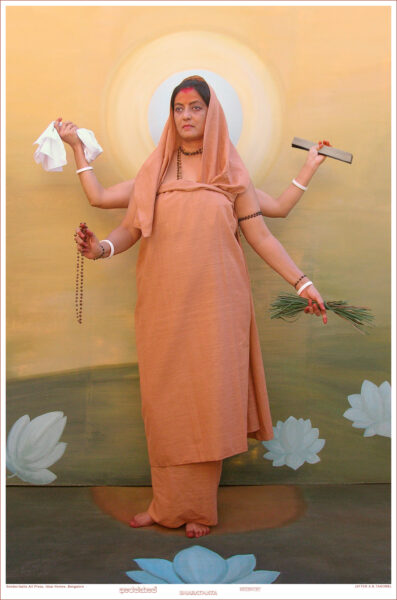
5
Pushpamala N
Dressing Up: Pushpamala N
Mother India, Avega ~ The Passion and The Arrival of Vasco da GamaPresented by CHANEL Nexus Hall
The Museum of Kyoto Annex
Pushpamala N (born 1956) is a multidisciplinary artist based in Bangalore, India. Initially trained as a sculptor, she began creating ‘photo-performances’ and staged tableaux in the mid-1990s, assuming various roles to craft thought-provoking narratives. Her work explores the construction of the feminine as well as the scaffolding of the nation-state. Described as ‘the most entertaining artist-iconoclast of contemporary Indian art,’ Pushpamala inserts herself into the frame, positioning herself at the centre of social inquiry and exploring the artist’s role as both creator and product of historical forces.
At KYOTOGRAPHIE 2025, Pushpamala will exhibit works including The Arrival of Vasco da Gama, recently exhibited at Tate Modern. Drawing from José Veloso Salgado’s 1898 painting, Pushpamala reimagines the Orientalist work by embodying both Vasco da Gama, the Portuguese explorer, and the ruler of Calicut on India’s Southwestern coast. Also featured will be The Mother India project, an ongoing exploration of historical representations and cultural ideals amidst a transforming nation-state. Pushpamala’s multifaceted practice, encompassing performance photography, video, sculpture, writing and more, engages with India’s art community. Her process is inherently collaborative: after identifying a resonant ‘ready-made’ image, she recreates it in her studio, directing a cast of friends, amateurs, and technicians to realise her meticulously crafted scenes. Props and backdrops from these productions are often displayed alongside the photographs, as in The Arrival of Vasco da Gama, where the tools of its construction are presented alongside the image.
In contrast to high-tech digital manipulations, Pushpamala’s analogue, theatrically constructed mises-en-scène deliberately emphasise their artifice, drawing attention to the conceptual framework underpinning each work. Her practice offers incisive reflections on how cultural and national memory are shaped through visual language.

Bharat Mata © Pushpamaala N
-
6
away
Lee Shulman & Omar Victor Diop
The Anonymous Project presents Being There
SHIMADAI GALLERY KYOTO
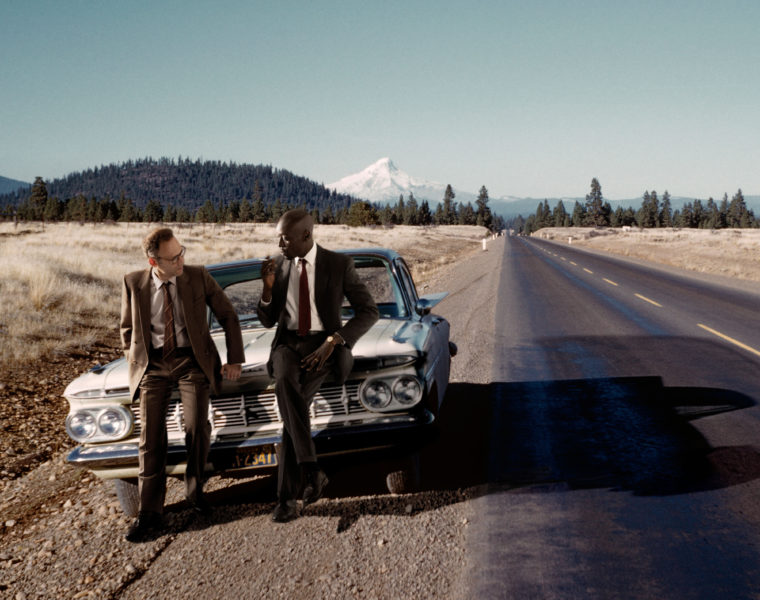
6
Lee Shulman & Omar Victor Diop
The Anonymous Project presents Being There
Supported by agnès b.
SHIMADAI GALLERY KYOTO
Being There assembles a gallery of familiar images—fragments of life once preserved in family albums, capturing fleeting celebrations and intimate moments. Yet these evocative snapshots construct an illusion of unbroken happiness, carefully framing joy while leaving the world’s complexities out of sight. It is within these absences that Being There finds its focus.
Originally taken in 1950s and 1960s North America, the photographs reflect an era of economic recovery and Cold War tensions, but also one of racial segregation and civil rights struggles. Lee Shulman and Omar Victor Diop intervene in these seemingly carefree scenes, introducing a Black presence where one would have been historically impossible. Their project disrupts the aesthetic innocence of these images, transforming them into powerful commentaries on race, class, and historical exclusion.
Maintaining the surface textures and grain of the originals, Shulman and Diop play with the tension between the ordinary and the extraordinary. The insertion of Diop into these images exposes the isolation of the Other, turning his presence into both a disruption and a quiet act of defiance. The result is unsettling, unexpected, and even playful, yet its critique is sharp and uncompromising. Being There does not offer answers but invites reflection—on visibility, representation, and the narratives we inherit. By blending fiction and history, Shulman and Diop confront the unease of addressing racism, insisting that discomfort should not lead to silence but rather to deeper questioning and engagement.
Text by Taous Dahmani

Being There_52-V1, 2024, The Anonymous Project © Lee Shulman & Omar Victor Diop
-
7
away
Hsing-Yu Liu
My Parents and I
Gallery SUGATA

7
Hsing-Yu Liu
My Parents and I
KG+SELECT Award 2024 Winner
Gallery SUGATA
Born in 1985 in Kaohsiung, Taiwan, Liu received his MFA degree from the National Kaohsiung Normal University.
Liu's work centered on themes of agriculture, ecology and gender equality. For Liu, photography serves as both a creative method and a participatory medium, playing a thoughtful yet playful role in engaging people with these issues. Liu was nominated for the 2018 Taipei Arts Awards and participated in the Cosmopolis #2: Rethinking the Human at the Centre Pompidou.
In the photographic installation work that he got KG+SELECT Award 2024, The Mail Address is No Longer Valid, to inform his ancestors about the legalization of same-sex marriage in Taiwan, he dressed his father in a wedding gown and his mother in a suit, staging a wedding that blurred the line between reality and illusion. Alongside photography, Liu incorporates calligraphy and sealing as a gesture to represent the absent and to bridge the past and future.
My Parents–Stigmata I © Liu Hsing-Yu
-
8A
away
JR
Printing the Chronicles of Kyoto
The Kyoto Shimbun Bldg. B1F (Former Printing Plant) & 1F
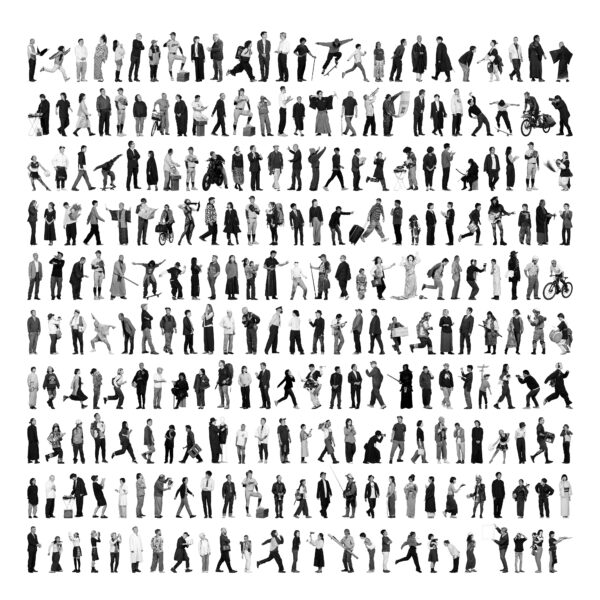
8A
JR
Printing the Chronicles of Kyoto
The Kyoto Shimbun Bldg. B1F (Former Printing Plant) & 1F
French artist JR transforms public spaces around the world with powerful large-scale portraits of residents. His work spans continents and communities—from striking images of women’s eyes pasted across buildings in the favelas of Brazil or the shanty towns of Sierra Leone, Liberia, and India. To portraits of Palestinian and Israeli workers placed face to face on either side of the West Bank wall, challenging viewers to see shared humanity beyond political divides.
In Japan, following the 2011 Great East Japan Earthquake and Tsunami, JR set up a mobile photo studio to capture A0-sized portraits of people living in affected areas, later displaying them in public spaces throughout the Tohoku region.
In his works, people are not spectators but active creators who shape the artworks and the landscape of their city. His public, almost monumental projects provoke questions and challenge passers-by to confront their own perceptions.
KYOTOGRAPHIE 2025 presents JR, Chronicle Kyoto 2024. Inspired by the Mexican mural artist Diego Rivera (1886-1957), in 2017 Chronicle project started, an immersive and impressive series of large-scale participatory murals. Each work entailed photographing and filming hundreds of people, alone or in groups, and then collaging their portraits together to create a narrative and highly realistic composition that dealt with a place or social issue. The project has previously been realised in the cities of Miami, New York, San Francisco and Paris.
In the autumn of 2024, JR and his team with the support of KYOTOGRAPHIE set up mobile studios at eight locations in Kyoto, including Kyoto Station, the plaza in front of Kyoto City Hall, on the Kamogawa Delta, and in the countryside of Ohara to create the Kyoto project. They captured the spirit of Kyoto through portraits of 505 people from all walks of life including geiko, tea masters, Buddhist monks, artisans, drag queens, and locals, each adding their presence to the city’s vibrant story. Simultaneously, they recorded each person’s story. These images were then woven into a dynamic collage that blends Kyoto’s rich urban tapestry, from historic machiya townhouses to contemporary architecture. The result is a monumental mural, 22.55 by 5 meters, set to transform the wall of the Kyoto Station Building into a celebration of the city's diversity and creativity.
In addition to JR, Chronicles Kyoto 2024, Chronicles works created by JR in other cities are exhibited in The Kyoto Shimbun Bldg. B1F (Former Printing Plant) & 1F. Portraits of 505 people photographed in Kyoto are cut out and displayed against a background of actual pages of the Kyoto Shimbun newspaper from the date they were photographed. Helped along by features unique to a former newspaper printing plant, viewers are drawn into the world of Chronicles.

© JR
-
8B
away
JR
JR, The Chronicles of Kyoto, 2024
Kyoto Station Bldg. North Wall
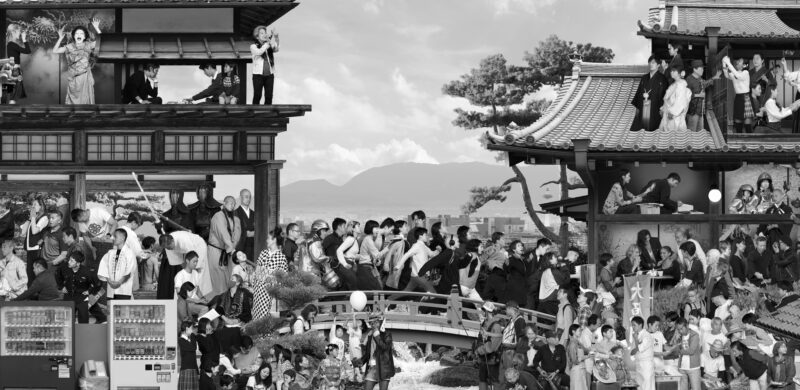
8B
JR
JR, The Chronicles of Kyoto, 2024
Kyoto Station Bldg. North Wall
French artist JR transforms public spaces around the world with powerful large-scale portraits of residents. His work spans continents and communities—from striking images of women’s eyes pasted across buildings in the favelas of Brazil or the shanty towns of Sierra Leone, Liberia, and India. To portraits of Palestinian and Israeli workers placed face to face on either side of the West Bank wall, challenging viewers to see shared humanity beyond political divides.
In Japan, following the 2011 Great East Japan Earthquake and Tsunami, JR set up a mobile photo studio to capture A0-sized portraits of people living in affected areas, later displaying them in public spaces throughout the Tohoku region.
In his works, people are not spectators but active creators who shape the artworks and the landscape of their city. His public, almost monumental projects provoke questions and challenge passers-by to confront their own perceptions.
KYOTOGRAPHIE 2025 presents JR, Chronicle Kyoto 2024. Inspired by the Mexican mural artist Diego Rivera (1886-1957), in 2017 Chronicle project started, an immersive and impressive series of large-scale participatory murals. Each work entailed photographing and filming hundreds of people, alone or in groups, and then collaging their portraits together to create a narrative and highly realistic composition that dealt with a place or social issue. The project has previously been realised in the cities of Miami, New York, San Francisco and Paris.
In the autumn of 2024, JR and his team with the support of KYOTOGRAPHIE set up mobile studios at eight locations in Kyoto, including Kyoto Station, the plaza in front of Kyoto City Hall, on the Kamogawa Delta, and in the countryside of Ohara to create the Kyoto project. They captured the spirit of Kyoto through portraits of 505 people from all walks of life including geiko, tea masters, Buddhist monks, artisans, drag queens, and locals, each adding their presence to the city’s vibrant story. Simultaneously, they recorded each person’s story. These images were then woven into a dynamic collage that blends Kyoto’s rich urban tapestry, from historic machiya townhouses to contemporary architecture. The result is a monumental mural, 22.55 by 5 meters, set to transform the wall of the Kyoto Station Building into a celebration of the city's diversity and creativity.
The Chronicles of Kyoto, Close Up, Japan, 2024 © JR
-
9
away
Eamonn Doyle
K
Higashihonganji O-genkan
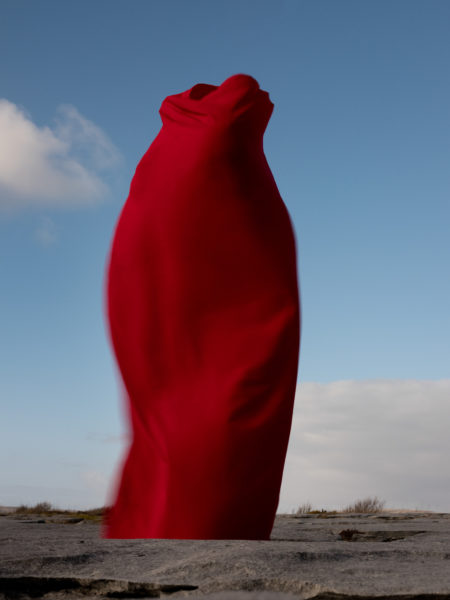
9
Eamonn Doyle
K
With the support of the Government of Ireland
Higashihonganji O-genkan
Born in Dublin in 1969, Eamonn Doyle studied painting and photography. He founded the internationally acclaimed D1 Recordings in 1996 and spent much of the next 20 years producing music and working in the independent music business.
In 2008 Doyle returned to photography and his subsequent Dublin trilogy of work (i, ON, End.), formed the centre-piece exhibition at Rencontres d'Arles in 2016. Fundación Mapfre Madrid staged the first comprehensive exhibition of his work in 2019. In 2024 Doyle was awarded The David Octavius Hill Medal by The German Photographic Academy. Doyle still lives and works where it all began, just off Parnell Street in Dublin. His music continues to feature as a fundamental aspect of his work, particularly in exhibitions and collaborative film works.
Doyle will exhibit the series K at KYOTOGRAPHIE 2025. In K, Doyle reflects on the impact of his brother's sudden passing on their mother, Kathryn. He layers the letters Kathryn wrote to her late son with images of a shrouded, spectral figure together with a specially composed sound work by David Donohoe based on Irish lamentation song, to create a powerful meditation on grief through photography, metaphor and sound.
K-01 (Irish series), 2018 © Eamonn Doyle
-
10
away
Tamaki Yoshida
Echoes from the Soil
TIME'S
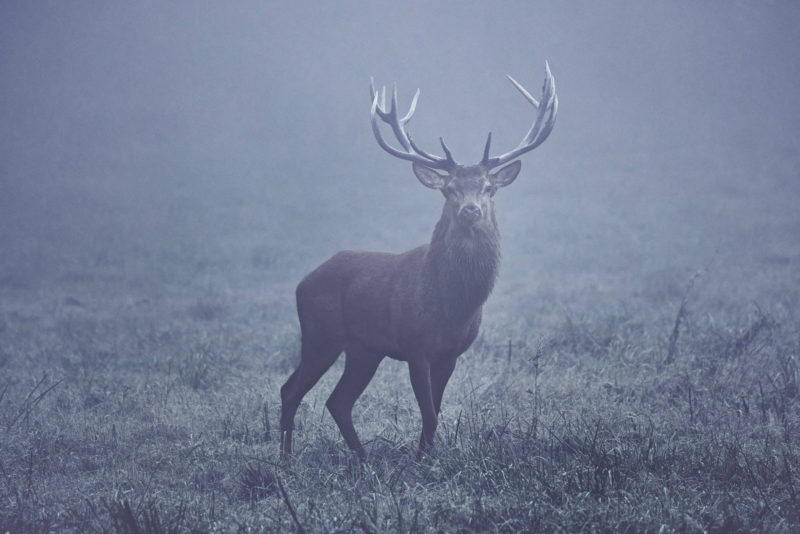
10
Tamaki Yoshida
Echoes from the Soil
Ruinart Japan Award 2024 Winner
Presented by RuinartTIME'S
In 2024, photographer Tamaki Yoshida was awarded the Ruinart Japan Award and undertook a residency at Ruinart, the historic champagne house in Reims, France. This project began as an inquiry into the memory embedded within the natural landscape of Champagne.
Beneath the vineyards, layers of limestone strata have accumulated over millennia, storing minerals and time itself. The deep roots of the vines extend into this reservoir, carrying the imprints of the past forward into new life. Observing this landscape, Yoshida came to see the soil not merely as matter, but as a vessel of memory—a layered archive of transformation and continuity.
"Does a photograph truly fix the past in place? Or does it shift in meaning, resonating anew as time unfolds?"
Her reflections deepened through an encounter at a fossil excavation site, where she saw traces of life from millions of years ago preserved in stone, waiting to be unearthed by a future gaze. She began to perceive photography in a similar way—images, too, can be buried in time, only to resurface and be rediscovered. In response, she expanded her practice beyond the act of photographing: she buried her images in the soil of Champagne itself.
Decomposing leaves, slugs and fungi, earth dissolving into itself, and the lifeless body of a bird found by the roadside—these elements were placed within the Room of Soil, where they rest beneath the floor, merging with unseen layers of time. Their presence, though buried, quietly rises to the surface.
Gradually, Yoshida’s gaze turned toward the unseen rhythms of life and death, beyond the reach of human hands. She listened to the distant calls of deer echoing from the depths of the forest, their presence sensed but never seen—until, as her time in Champagne neared its end, one finally emerged before her eyes. The vitality of its form, together with the flight of birds overhead, became central to the Room of Regeneration. Here, Yoshida sealed these images, along with elements from the land itself, into hand-pulled washi paper, embedding time within its fibers. The works are arranged to embody the ceaseless movement of life—rising from the earth, dissolving into it, and returning once more.
Echoes from the Soil is an exploration of photography beyond its conventional role as a static record. Seeking to heighten the purity of seeing, Yoshida engages in a dialogue between images, space, and time, asking how memory, held within the earth, continues to reverberate into the future.
* This image represents work in progress ©︎ Tamaki Yoshida
-
11
away
Martin Parr
Small World
TIME'S
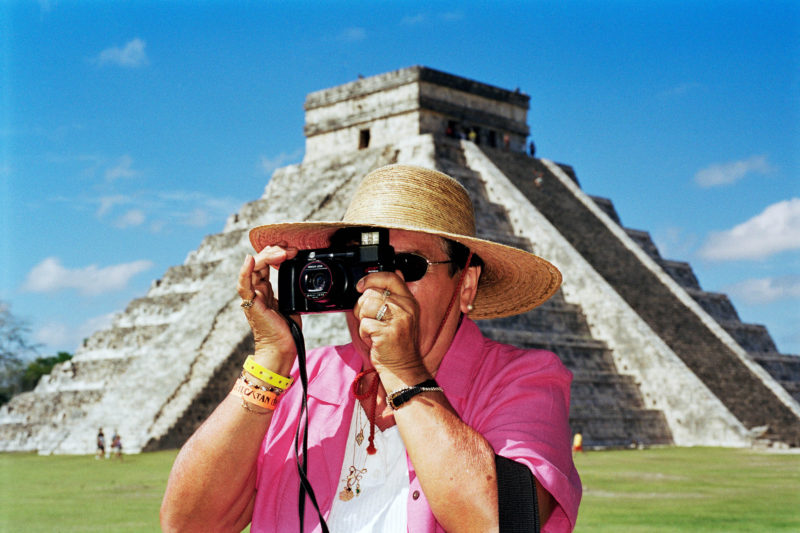
11
Martin Parr
Small World
In collaboration with Magnum Photos
TIME'S
The photography historian Thomas Weski described Martin Parr as a “chronicler of our time.” Indeed, for over four decades Martin Parr has shown us his personal vision of the world, its changes as well as its challenges.
In his series Small World, Parr photographs the average tourist that we all are. However, his aim is not to capture the usual ‘vacation shot’; he is not interested in ‘tourist vacation pictures,’ but in picturing tourism itself. What he focuses his camera on is the gap between our shared mythologies of ‘must see’ tourist spots and their (sometimes rather disappointing) reality. We, the tourists, have magical pictures in our minds of the Acropolis in Athens, the Tower of Pisa, Machu Pichu, Mount Fuji, and so on. We imagine ourselves there, transported by beauty, alone and in awe of the majesty of the place and the uniqueness of the moment. Reality, however, is very different. We are not alone. We have to share these places with hundreds or even thousands of other tourists. We fight for a spot, queue for hours, get what we didn’t order, buy what we do not need, and try to enjoy what we are not really enjoying.
With Small World, Martin Parr presents us with a particularly cruel mirror. His statement on tourism as a form of modern ‘imperialism,’ on the ‘Americanization’ or even ‘Disneyfication’ of the world, is disguised in happy colors and humorous scenes.
Text by Andréa Holzherr
Prior to the festival, Martin Parr will photograph various locations in Kyoto often associated with mass tourism. This latest work will be presented at KYOTOGRAPHIE 2025.

Chichén Itzá, Mexico, 2002 © Martin Parr/Magnum Photos
-
12
away
Graciela Iturbide
GRACIELA ITURBIDE
Kyoto City Museum of Art Annex
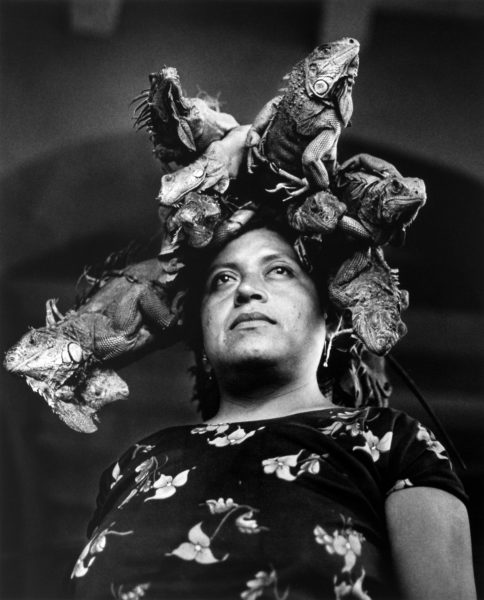
12
Graciela Iturbide
GRACIELA ITURBIDE
Presented by DIOR
Kyoto City Museum of Art Annex
“For me color is fantasy, I see reality in black and white.” Within the abstracted world offered by this absence of color, Graciela Iturbide observes and understands, experiences and interprets, all that surrounds her by capturing everyday events with spontaneity and surprise.
Her universe is inhabited by those who live in the sand, Zapotec women, and muxes sharing their traditions, rituals, and popular fiestas, pulsing with the strength of Mexico’s indigenous communities. In amongst these tales are metaphors of life and death: flocks of birds flitting across the skies, slithering snakes, herds of goats poised for a feast.
Iturbide’s photographs are poetic portraits in which nature and humans converge to create beautiful images of a personal world rich in symbolism and imagination. With eyes wide open, she travels to lands of distant cultures before returning to other territories to trace her own footprints, dreams, and obsessions.
Her sense of wonder for botany is revealed in arid landscapes and lush gardens, in the whimsical shapes of plants, and in the fragility of trees which, alongside silent stones, like sculptures or silent witnesses, gradually find their place in an abstract language.
This exhibition, the first retrospective of Mexican photographer Graciela Iturbide held in Japan, shows six decades of her remarkable work, offering a glimpse of a unique world seen through her eyes.
Text by Elena Navarro

© Graciela Iturbide
-
13
away
Eric Poitevin
The Space Between
Ryosokuin Zen Temple
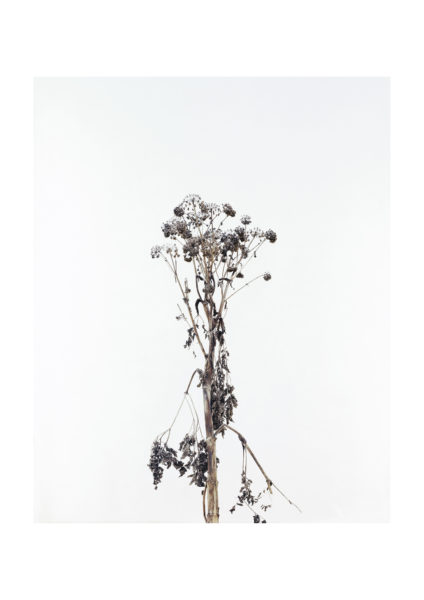
13
Eric Poitevin
The Space Between
Presented by Van Cleef & Arpels
Ryosokuin Zen Temple
Based in the Meurthe-et-Moselle department, not far from his native Meuse in northeastern France, photographer Eric Poitevin has created his own unique photographic world. Since the mid-1980s, he has continued to produce meticulously composed photographs with his own style and sense of time, taking up typical subjects of Western classical painting. His outdoor landscapes, especially forests, feature luxuriant vegetation covering the entire surface of the frame, with the horizon line almost completely obliterated. Excessive staging and lighting effects are stripped away to present the shapes and growth process of the vegetation just as they are, in perfectly composed images that allow the viewer to encounter the space and time as if being led into the forest. His portraits and still lifes, set against the white background of the studio, make the most of the large margins, and the subjects, whether people or things, appear in an abstracted time-space, as if the surface of the image had been punctured. His still-life photographs of withering plant branches standing upright, and the vanitas of skulls lined up with toys and fruit, capture the ambiguous realm where organic matter loses its vitality and passes into the inorganic.
Poitevin’s works, especially his studio photographs, capture his subjects as sculptures, but he seems to aim for flatness. Many of his photographs are taken from directly above or directly to the side, with almost no perspective. To further enhance this effect, he avoids excessive shading, mainly through the use of non-directional lighting, so that the shape and existence of each object is expressed just as it is, with no hierarchical ranking among the pictured objects.
The exhibition’s Japanese title, Ryōbō, is a Zen term that means detachment from dichotomies: forgetting dualities that divide the world, forgetting oppositions between two sides. Rather than simply forgetting opposing elements, Poitevin’s ryōbō creates a distinctive time and space through an arrangement meticulously constructed over a long period of time, appealing to us with a new perspective, free from the dichotomies of reality.
Text by Kei Osawa (Researcher, The University Museum, The University of Tokyo)

© Eric Poitevin
-
14A
away
Laetitia Ky
LOVE & JUSTICE
ASPHODEL
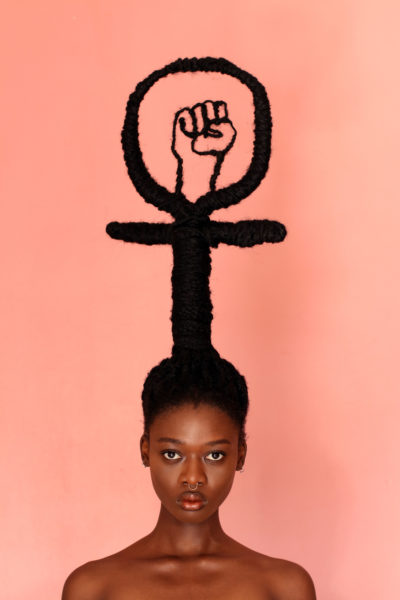
14A
Laetitia Ky
LOVE & JUSTICE
Supported by Cheerio
ASPHODEL
Growing up in Ivory Coast, Laetitia Ky’s sense of self was influenced by a colonial history that carried particular ideals of beauty, skin tone, and hair texture: straightened hair and lighter skin were viewed as desirable, representing success and beauty. Ky watched women in her family bleach their skin, and experienced hair-relaxing sessions that left her scalp burning. But when she was 16, a chemical treatment gone wrong destroyed her already chemically-processed hair, and most of it fell out. Searching for ways to grow it back, she discovered the natural hair community in the US and began to question why she had felt the need to change herself in the first place. She decided to shave her head and start over.
Learning to love her hair’s natural texture took time, however; she had to retrain her mind to accept a texture that society hadn’t always celebrated. Then she stumbled upon a photo album showcasing the stunning hairstyles of African women from the pre-colonial era: sculptural, intricate, and abstract, like works of art. Digging further, Ky learned that
in pre-colonial societies hair was a profound form of expression and communication. Each hairstyle told a story about a person’s identity, marital status, or profession. This made her realize just how powerful the very thing she had been trying to erase was. What started as a personal journey toward self-acceptance turned into an artistic exploration, as she began sculpting her hair into shapes that tell stories of self-expression and cultural pride.
feminist, 2021, Abidjan © Laetitia Ky
-
14B
away
Laetitia Ky
A KYOTO HAIR-ITAGE
Demachi Masugata Shopping Arcade - DELTA/KYOTOGRAPHIE Permanent Space
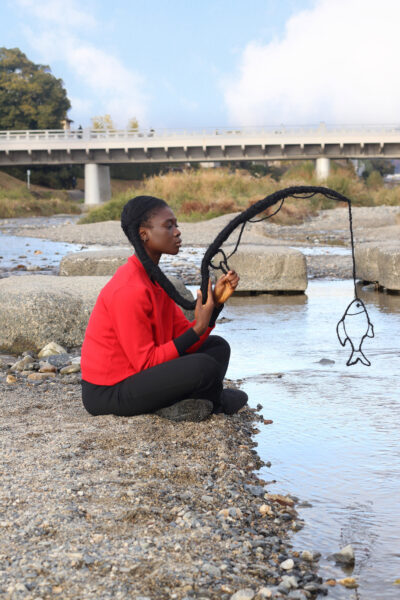
14B
Laetitia Ky
A KYOTO HAIR-ITAGE
KYOTOGRAPHIE African Residency Program
Demachi Masugata Shopping Arcade - DELTA/KYOTOGRAPHIE Permanent Space
Laetitia Ky is an artist, activist, and entrepreneur whose work centres on themes of self-love, cultural identity, and empowerment. Known for her innovative approach to art, she uses her platform to explore the beauty and cultural significance of Black hair, often challenging societal norms and promoting positive self-image. Through her art, especially her hair sculptures, Laetitia encourages individuals to embrace their heritage and personal identity. She is also involved in fashion, cinema and literature. Through words and images her first book LOVE AND JUSTICE explores her point of view as an activist for equality in Côte d’Ivoire.
At KYOTOGRAPHIE 2025 Ky will present at ASPHODEL some of her most iconic past works and in Demachi Masugata Shopping Arcade new self-portraits with unique hairstyles that embody her identity. These works were produced during Laeticia’s stay in Kyoto for the KYOTOGRAPHIE African Artist Residency in Winter 2024.
© Laetitia Ky
-
15
away
Sharing Visions
The Heartwork of Kyoto Journal
SHIMADAI GALLERY West
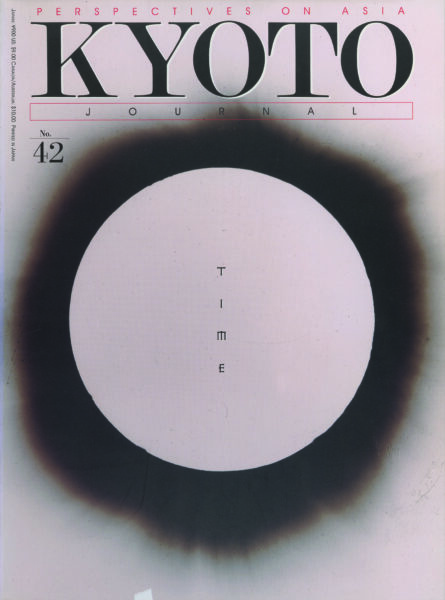
15
Sharing Visions
The Heartwork of Kyoto Journal
SHIMADAI GALLERY West
Based in one of the world’s great cultural cities, Kyoto Journal has endeavoured to explore, celebrate, and share the diverse traditional and contemporary creative life of Kyoto, Japan and Asia at large for nearly 40 years. Kyoto Journal’s network of contributors—based both in Japan and abroad—are all volunteers, making the magazine home-grown, independent and outside the sphere of commercial media.
Under the direction of photographer and founding editor John Einarsen, photographic art has played an important role in each edition. This exhibition showcases a selection of the most compelling images and the stories behind them collected from the past 108 issues, forming the ‘heartwork’ of Kyoto Journal.
Kyoto Journal Issue 42 Photograph by Linda Connor
-
16
away
KyOtOmAsOn MArAthOn !
Genpei Akasegawa/ Hyperart-tomason / Urban Observation
KYOTO ART CENTER, Tokusho-ji Temple
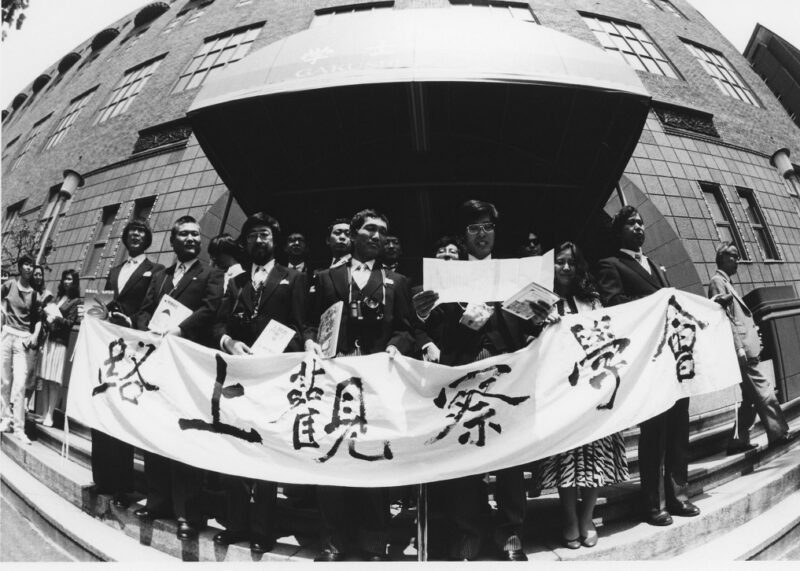
16
KyOtOmAsOn MArAthOn !
Genpei Akasegawa/ Hyperart-tomason / Urban Observation
KYOTO ART CENTER, Tokusho-ji Temple
This exhibition visually traces the birth of the concept of tomason with focus on Genpei Akasegawa (1937–2014), the central figure of this aesthetic, philosophical, editorial, and human adventure. It draws public attention to the activities of the Hyperart-tomason Observation Center and the Street Observation Society (ROJO).
The exhibition will be primarily held at the KYOTO ART CENTER, as part of the KYOTO ART CENTER’s 25th anniversary celebrations. Many archival materials—including numerous unpublished and uncatalogued photographs and videos— introduce the merits of urban observation to the public. Educational workshops, readings, and gatherings encourage KYOTOGRAPHIE and KG+ visitors to explore the city and discover their own tomason “urban performances.” Visitors are encouraged to post their images on Instagram with the hashtag, which will then be compiled into an interactive ‘kYoToMaSoN MAP’ on display at the KYOTO ART CENTER.
A closing public presentation brings together the hyperart-tomason and other urban items discovered by visitors throughout the city during the festival, and a symposium will be held in honour of Genpei Akasegawa and to celebrate all involved in this adventure. These events will take place at the Tokusho-ji Temple, a partner of the exhibition.
Additionally, the exhibition highlights Genpei Akasegawa’s influence on contemporary artistic practices by involving several young visual artists, fostering a dialogue between their artworks and the presented documents and events.
Street Observation Society Inaugural Ceremony, June 10, 1986 © Iimura Akihiko
-
17
away
Daisuke Yokota
Daisuke Yokota x Another Man
The Lombard
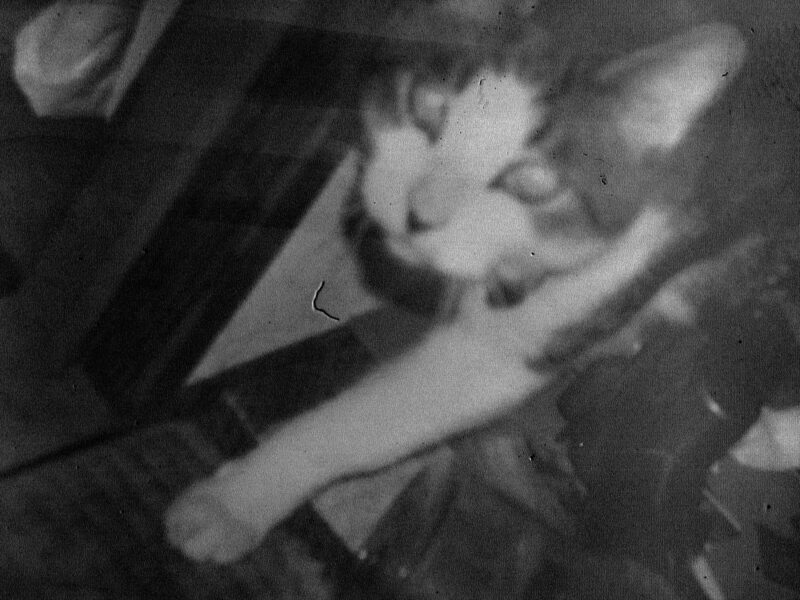
17
Daisuke Yokota
Daisuke Yokota x Another Man
The Lombard
Another Man Magazine collaborates with Daisuke Yokota for this exhibition, continuing the magazine’s commitment to showcasing works by contemporary photographers who push the boundaries and narratives of what photography can be in an image-saturated post internet culture.

©Daisuke Yokota


